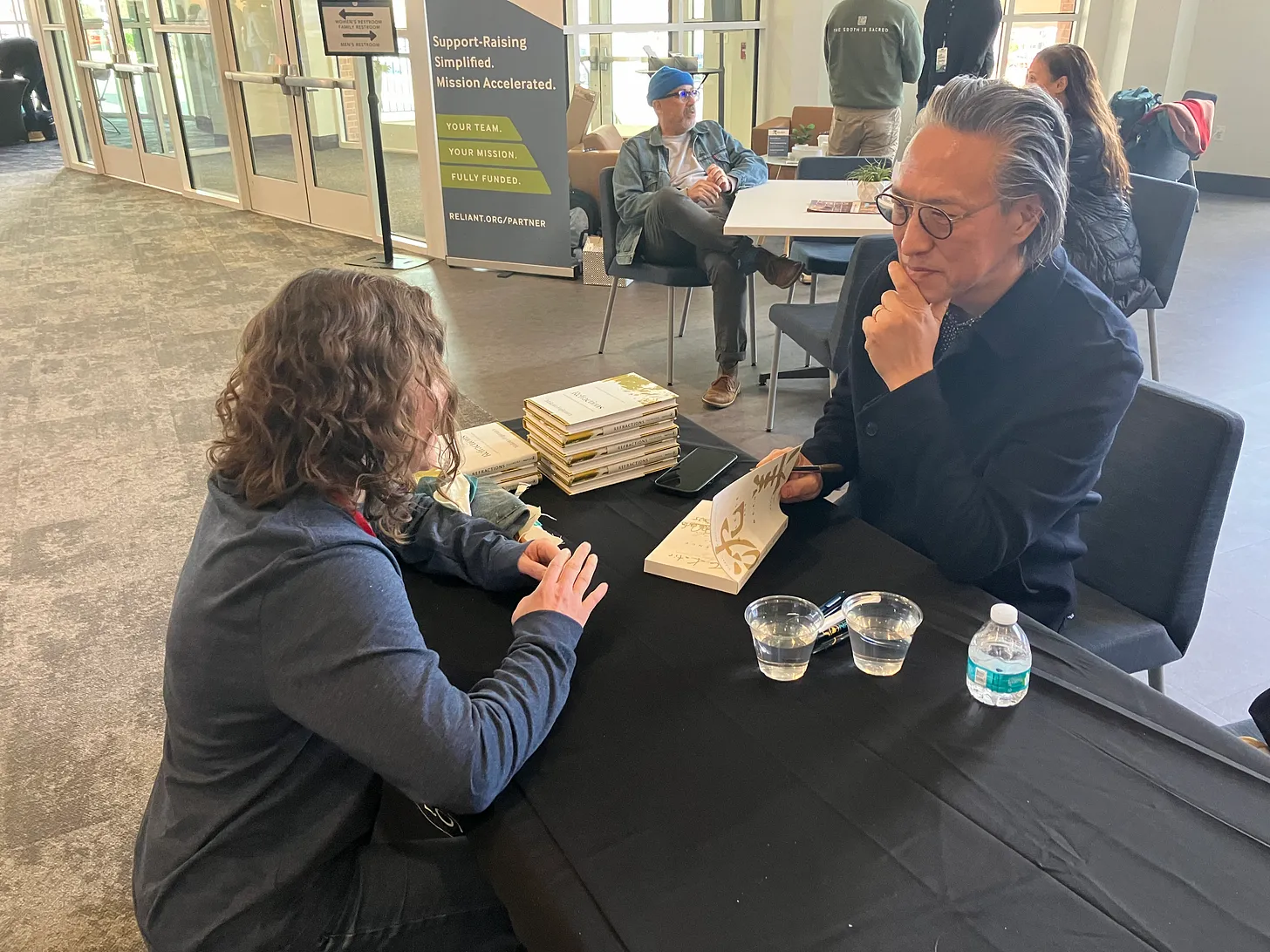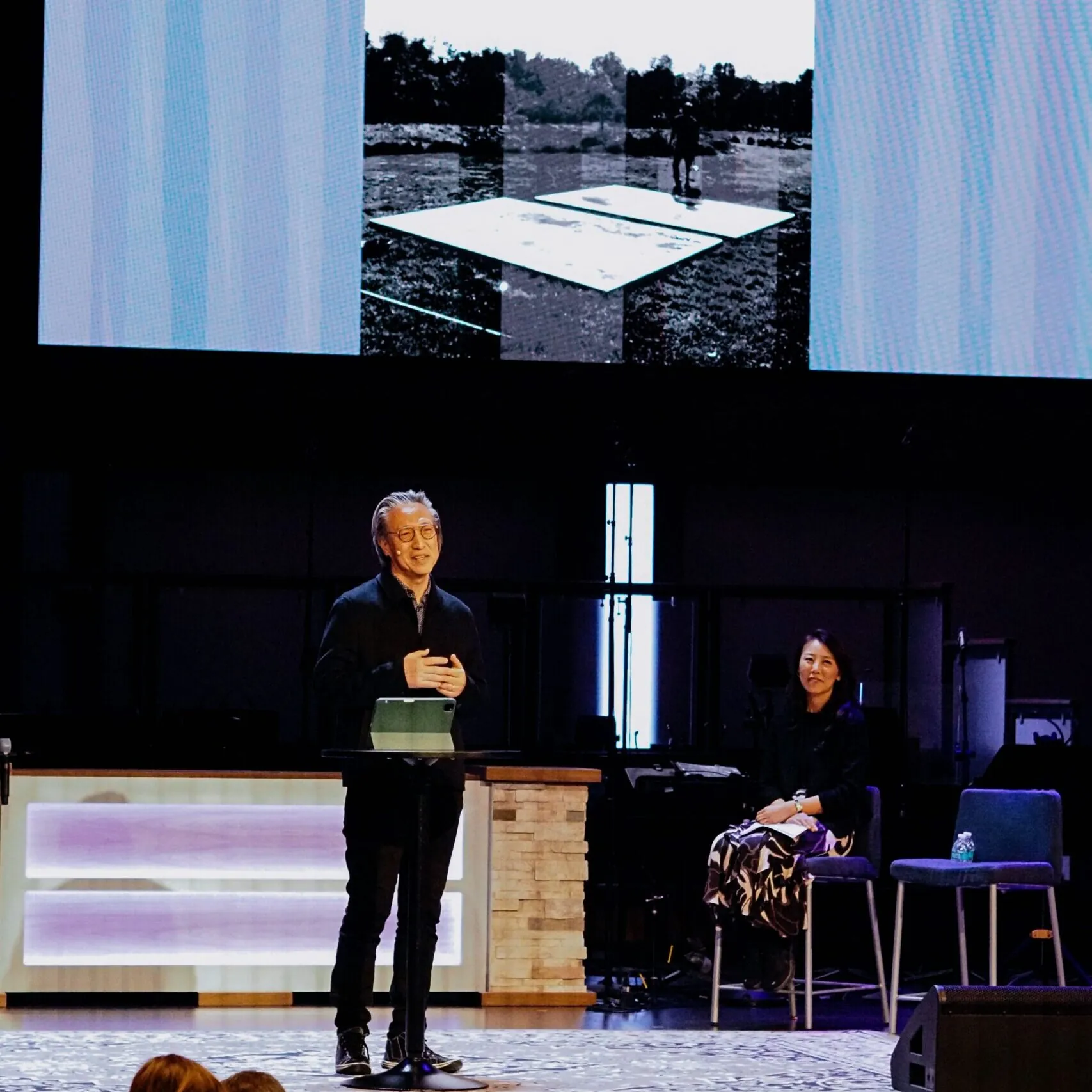The Art of Grieving: A Spiritual Practice for our Time
On January 6th at approximately 5:12 am, my head was lying on the pillow next to my dad’s face and my arm was across his chest holding him, and he had just died.
Then out of his mouth, just as it happened when my mother died, came two sweet long exhaling breaths of air, the last of his life. And with those two long breaths something shifted in me. I knew it, but I didn’t understand it. I knew that something holy and mystical happened for him and for me, and this time, I wanted to embrace it and let it shape me. When my mom died fourteen years earlier, I did not take time to learn this art of grieving, and I still suffer spiritually and emotionally because of it.
Death is something we all experience. Birth and death are the doors we all go through, one into this world and the other to leave it. And there is no one who has gone through those doors who can tell us what it is like and to give us wisdom. The newborn is too unformed. The one dying is gone. Yet the impact of those two events are profound, changing the course of all life no matter how humble the person.
Death is something we all experience. Birth and death are the doors we all go through, one into this world and the other to leave it. Share on XHowever, in the US while we celebrate and talk about births copiously, deaths are considered an “un-American experience.” Lawrence Samuel writes in Psychology Today, “The rise of the self has made it increasingly difficult to acknowledge the fact that our individual selves will no longer exist. Death and dying became almost unmentionable words over the course of the last century, topics not to be brought up in polite conversation.”1 Even our language of ‘passed away’ sidesteps the obvious reality of death.
The Journey
As Christians we know we live eternally with Christ our Lord; however, we still often are quick to move on and seek closure.2 We tell people uplifting and heart-felt things such as, “He lived a good life and he’s in a better place” and “She’s not suffering and is with Jesus.” Though these are true of Christ followers, they also can represent a desire to get through the grieving quickly and move on with the business of life. We cut short the spiritually-forming power of embracing the death of a loved one and of engaging with every part of ourselves through the grief journey.
In many non-Western cultures, grieving the death of a loved one is a very physical and lengthy process.3 The body is bathed, touched, dressed, and honored. The grieving family might wail, with friends joining them, and usually the family will take many days to honor the departed, especially a parent, spouse, or child. Anthropologist Anita Hannig wrote that the US attitude towards shuttering off death into institutions began after the nineteenth century. Before then people usually died at home and the family took care of the body.4 Death was visceral.
Neglecting to linger with death has huge consequences spiritually. When death becomes a quick and efficient affair and grieving is something we get through sooner rather than later, we miss a universal rhythm which has much to teach us. In essence we miss the cross. Death speaks to the mystery of suffering, loss, and love. Death, even suffering death, is holy.
We also neglect to honor the one who is gone, whether that was a complicated relationship or not. I have done this before. But now I want to take this journey with the death of my dad differently. I feel the Holy Spirit calling me to something more.
Neglecting to linger with death has huge consequences spiritually. When death becomes a quick and efficient affair and grieving is something we get through sooner rather than later, we miss a universal rhythm with much to teach us. Share on XSince “about 2.5 million people die in the United States annually, each leaving an average of five grieving people behind,”5 death is something that touches us all at some point. I believe as Christians we could all benefit from embracing a more disciplined and shared grieving process. For guidance I looked to the Jewish practice of Sheloshim for guidance. The word means ‘thirty.’ In Jewish tradition, it is the first thirty days of mourning after the burial of a loved one.
After her husband, Dave, died tragically, Facebook executive Sheryl Sandberg wrote about her own thirty-day process of grieving on her own Facebook page:
A childhood friend of mine who is now a rabbi recently told me that the most powerful one-line prayer he has ever read is: “Let me not die while I am still alive.” I would have never understood that prayer before losing Dave. Now I do.6
I think when tragedy occurs, it presents a choice. You can give in to the void, the emptiness that fills your heart, your lungs, constricts your ability to think or even breathe. Or you can try to find meaning. These past thirty days, I have spent many of my moments lost in that void. And I know that many future moments will be consumed by the vast emptiness as well.
But when I can, I want to choose life and meaning.
The Sheloshim is an intense period of grief with particular guidelines about grooming, activities, and spiritual practices. The time period is based on Deuteronomy 21:13c (“She shall…mourn her father and mother a full month”) and Deuteronomy 34:8 (“the children of Israel wept for Moses in the plains of Moab for thirty days.”) Along with a scriptural basis, there is a natural basis for the thirty days. The moon’s full cycle takes a month; “so too, a mourner’s adjustment to his or her new reality takes a month.”7
The Practice
The idea of this practice deeply resonated with me. I believe the Holy Spirit invited me to do this. In order to enter fully into grieving my father, I have decided to dedicate myself to this process for thirty days. I have adapted the Jewish guidelines to reflect my Christian faith and to be a spiritual formational experience in these three ways:
- Signaling to all – Grooming Guide: The traditional guidelines for Sheloshim require the person to refrain from haircuts, grooming, and using new or clean clothes. The purpose, I believe, is to ‘wear’ your grief…to be reminded every day of your great loss and especially to remind others that you are grieving. For myself, I have felt called to abstain from social media for a month, letting my friends and family know I am in a period of mourning. I need to remind myself and others that I am on a grief journey.
- Creating Space – Activities Guide: The Jewish guidelines require that the mourner attend no festive activities and take no pleasure trips. Work is allowed. For me as a Christian what I need most at this time is space to grieve the death of my dad. For me I have decided to refrain from other activities which are not work related. My work is my seminary teaching responsibilities. Other activities such as other meetings, speaking, coaching, or spiritual direction—which add an extra measure of attention to others—I will fast from these for a month. When we grieve we need extra time to process our loss. I cannot do this with a full plate. Much like a small death, I must pull back from the world and the compulsion to strive in order to sit with the loss of my dad. In essence, spiritually I will sit by his grave.
- Focusing on God and the Loved One – Spiritual Practices Guide: The guidelines tell the mourner to continue to memorize the Misnah, a collection of the Jewish oral traditions from the third century. The mourner is also to pray daily a Mourner’s Kaddish, a sacred prayer which focuses on exalting and glorifying God. For me as a Christian, I want to memorize the verses that my Dad left to guide all of us. I have a small handful of them. They were his blessings to us, and I want them as part of the fabric of my being. For prayer, I want to pray out loud Psalm 145 every day, as the focus of the prayer is on God. And I will write, journal, and process what the Holy Spirit will stir up in me.
God uses life events, such as the death of a loved one, to open our hearts and minds to God’s full life in us and to God’s wisdom. Death and its journey can help us embrace more abundantly our authentic self. Death and the grief journey teaches us about God in ways that words and busyness never can. Loss, extreme final loss, expands our minds to see the world in a different way, Christ’s way. With the last breaths of my dad on my face, I knew this. I shifted, but I also knew this shifting would fade if I did not walk through the valley of my Dad’s death. I wanted those last two sweet breaths from my dad’s face to mine to mean something in my soul.
The church has forgotten how to help people grieve. What would it be like to companion people in their grief by recognizing thirty days of mourning? I felt guided to make some choices to do this with the death of my dad, but I think each of us when in this ancient place of death can make choices to allow ourselves to grieve.
[1] https://www.psychologytoday.com/us/blog/psychology-yesterday/201306/death-american-style [2] https://www.counterpunch.org/2002/02/03/america-s-culture-of-grief-and-dying/ [3] For examples see: https://undark.org/2017/10/19/death-dying-america-anthropologist/ [4] Ibid. [5] https://www.therecoveryvillage.com/mental-health/grief/related/grief-statistics/#gref [6] Sheryl Sandberg post on Facebook June 3, 2015 [7] http://www.jewish-funeral-guide.com/tradition/sheloshim.htm



